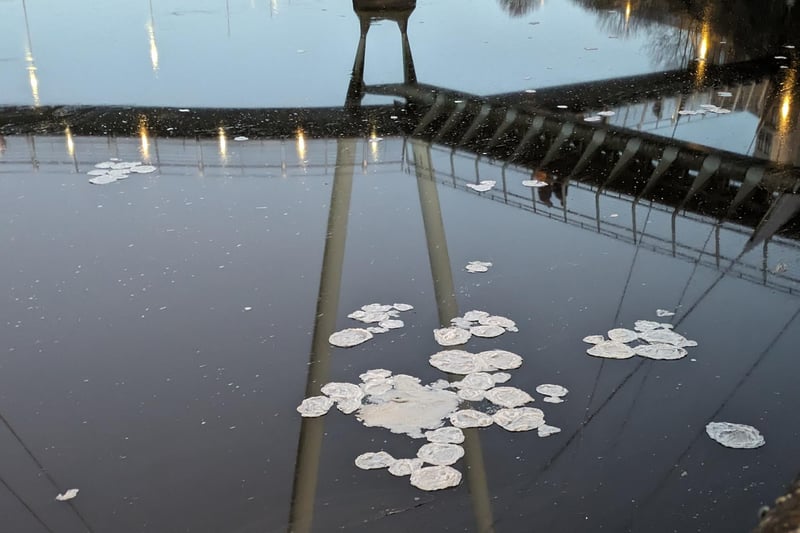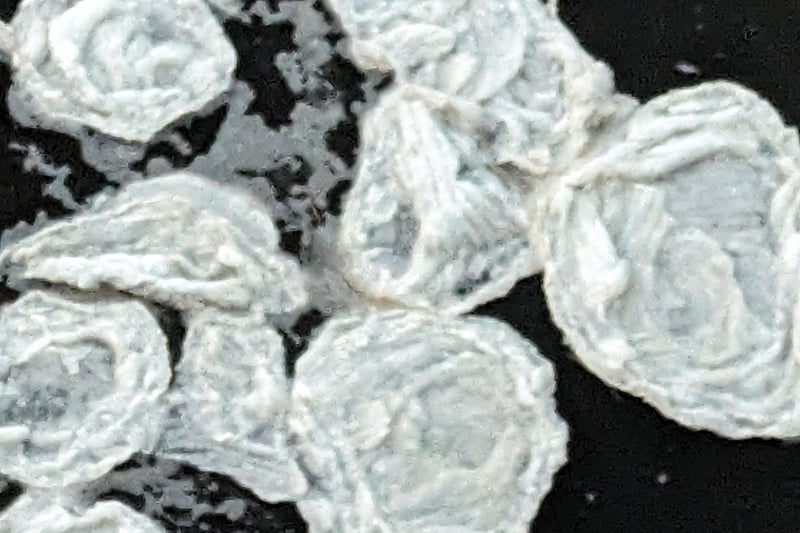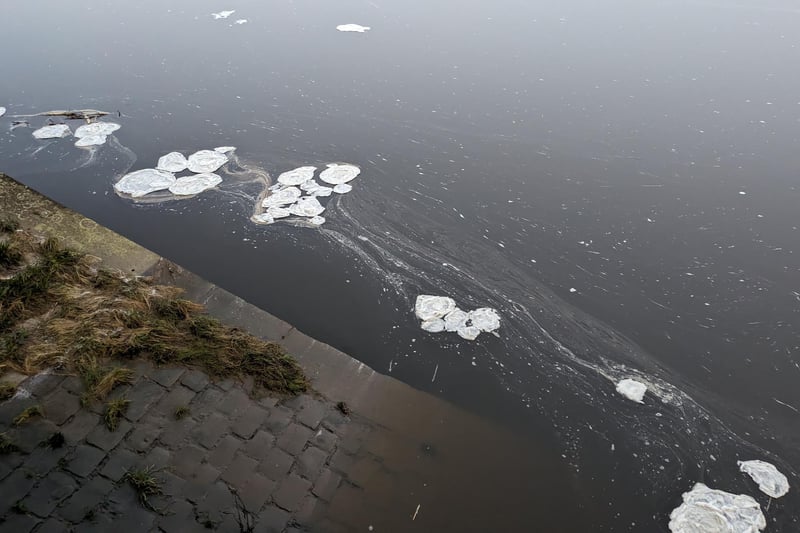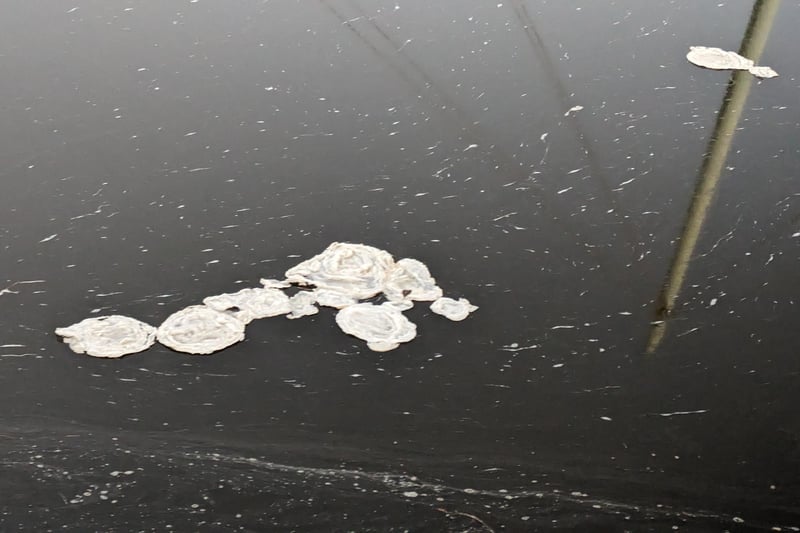Ice pancakes are a phenomenon where discs of ice anywhere from 20 to 200cm wide are formed, creating a unique spectacle.
They are relatively rare and tend to occur in very cold oceans and lakes.
Alex and Jan Walker, who live in New Quay Road, spotted the rare occurrence during a walk on Wednesday.
"My wife and I and passers by thought they were hundreds of empty plastic bags!" Alex said.
He has since reported the sighting to the Environment Agency.
Ice pancakes are most frequently seen in the Baltic Sea and around Antarctica but also form relatively frequently on the Great Lakes of the United States and Canada.
They require some rather specific conditions in order to form and can form in one of two distinct ways.
In oceans, seas and lakes the discs are created when waves cause forming pieces of ice to knock against each other rounding their edges as they freeze and grow. Small rims are created on the edges as the knocking causes splashing water to freeze and join the rim.
They are also believed to form when foam on a river begins to freeze which begin to join together and as they are sucked into an eddy (a swirling current of water) and form into a circular shape as a result. As other bits of frozen foam and ice hit the forming disc they freeze to it and increase its size.
Whilst ice pancakes look like solid discs, they are often quite slushy and easily break apart when lifted up.
However, when given the conditions to consolidate, ice pancakes can end up binding with each other to form sheet ice and in rougher conditions waves can move these sheets of ice causing them to bend and crack to create ice ridges.



